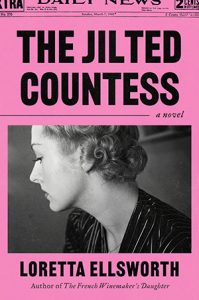The Story Behind the Book
“My mother in-law and father in-law got married on their first date. They’d known each other before that, but never dated. That fact always blew my mind. I couldn’t imagine how you could marry someone after one date. And then I read about the Hungarian countess.”
Curt Brown’s article appeared in the Minneapolis Star Tribune in 2015. In it he appealed to readers to email him if they knew what happened to this woman who made a huge splash among readers and then disappeared. In the original article published in 1948, newspaperman Cedric Adams related how she’d come to his office heartbroken and desperate to stay in America. She was twenty-four years-old, a Hungarian countess whose family had lost everything, and who had come to America to marry the soldier she’d met in Europe during the occupation. He had proposed before he left her, and they’d written diligently, planning a life together. But when she finally arrived, he told her he’d recently married someone else.
To add urgency to the story, she only had two weeks left to marry a soldier or she would be deported back to Hungary, which was under Communist control, and where they were keeping lists of those who fraternized with Americans as enemies.
Adams decided he would tell her story in his column and make a plea to his male military readers to marry this woman (he used a fake name so not to embarrass her). A photo accompanied the article. He was unprepared for the reaction, though, when letters, phone calls, money, flowers, and candy poured in from 1,789 suitors.
The countess, who earns the title as the first Bachelorette (long before TV made dating a competitive sport), narrowed it down to a few men, and went on a few ‘first’ dates, all within two weeks. Then she chose a man and settled in a small Minnesota town before disappearing from the headlines.
“I wondered how her life turned out. How did a Hungarian countess fit into small-town life in Minnesota? Did she find happiness? I emailed Curt Brown, who said he never received an answer to his 2015 article, and he also wondered what happened to her.”
“This, of course, is what historical fiction authors yearn for. A little-known piece of history. A fascinating story. Bonus points for being able to draw upon a true story. The best ending would be one in which I find the real countess, to know how it all worked out. But second best is being able to write a story in which I imagine the ending.”

